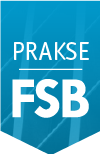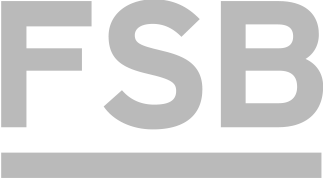International Exchange
Course details
Student Mobility > Programmes and Courses > Courses in English > Course detailsWork Study and Ergonomics
- Teaching:
- ECTS:
- Level:
- Semester:
- Prerequisites:
- There are none.
- Load:
Lectures Exercises Laboratory exercises Project laboratory Physical education excercises Field exercises Seminar Design exercises Practicum 30 0 0 0 0 15 0 0 - Course objectives:
- Importance in profession, science and in sociological development, as well as theoretical hypothesis of Work Study and Ergonomics WSE. Special programs for areas work rationalization/simplification, work time structure and determining, measuring and projecting of time duration for operation/work. Application of theoretical hypothesis on examples, by demonstration of different media modes from classical to computational. Trends and possibility of developing in WSE as a whole/integral, whole and its parts.
- Student responsibilities:
- Grading and evaluation of student work over the course of instruction and at a final exam:
- Written and presented essay 50 %. Exam 50 %.
- Methods of monitoring quality that ensure acquisition of exit competences:
- Active participation of student during lectures. Examination of understanding of the material with consultations during the preparation of essay and presentation. Knowledge assessment by written exam.
- Upon successful completion of the course, students will be able to (learning outcomes):
- Upon passing the course the student will be able to: Recognize the Importance of Work and time study and ergonomics in practice, science and in sociological development, Recognize the work time structure (total production time, technological production time, support production time, preparatory-final time), Use the systems of predetermined times, Use the ergonomic principles by workplace design, Use the software for ergonomics and time and work study.
- Lectures
- 1. Work Study and Ergonomics (WSE). Organizational structure and bussiness activities in organization.
- 2. Work Methods Study (WMS). Work Rationalization (WR) and Work Projecting (WP). Rationalization and work formation. Development of patent law unification.
- 3. Levels and principles of creativity. Methods, techniques and skills for stimulating creativity. Innovation system and processes. Innovation and systemic innovation. Principles of innovation. Entrepreneurship.
- 4. SWOT analysis. Methods and/or techniques for rationalization and projecting. Expenses and rationalization. Design of work places and work procedures. Autonomous group work.
- 5. Work science. Ergonomics (E). Sorts, modes and types of basic problems solving. Ergonomic principles. Equipment for research. Software (Siemens Jack).
- 6. Work Time Structure (WTS). Production affecting parameters and causes of loss. Equipment capacity. Types and categories of capacity.
- 7. Classification of projecting modes/types for WTS. Classifications of using modes and dynamics for WTS. Degree of utilization of the capacity of the equipment and time fond for worker and its measuring.
- 8. Methods, techniques and procedures of establishing WTS. Procedure: Work Day Figure (WDF) method. Procedure: Methods of Instant Observations (MIO). Comparison of structures for different entities.
- 9. Duration Work Time Study WTS/Determining, measuring and definition of work duration/ operation time. Development of the measuring system and measuring time units system. Software (UmtPlus).
- 10. Hierarchic-leveled structure of technological processes. Principles of classifying work into elements. Types of standard elements. Basic elements of work duration and losses.
- 11. Measuring and time duration design technologies (cronomether and tools, PDTS, use of formula, tables, diagrams, nomograms, MOST technique).
- 12. Measuring equipment. Learning process of a developer, basic approach and artificial neuron networks. Measuring practice phases, definition and design of time norm.
- 13. Definition and types of norms. Simultaneous work on two or more automatized machines. Parkinson"s law or growing pyramid. Possibilities for human work quantification.
- 14. Trends and features of approaches, systems and models in development of work study and ergonomics. Social-working and legal regulative of areas (laws, regulations etc.).
- 15. Relationships of time norm with stimulating and reward system in work. Work Estimating. Methods and procedures of work estimating system.
- Exercises
- 1. WSE examples. Essay assignment.
- 2. WSE examples. Essay assignment.
- 3. Work on essay and regular consultations.
- 4. Presentations of essays. Work on essay and regular consultations.
- 5. Presentations of essays.
- 6. UmtPlus software for time study - examples.
- 7. UmtPlus software for time study - examples. Essay assignment.
- 8. Work on essay and regular consultations.
- 9. Presentations of essays. Work on essay and regular consultations.
- 10. Presentations of essays.
- 11. Siemens jack software for ergonomics - examples.
- 12. Siemens jack software for ergonomics - examples. Essay assignment.
- 13. Presentations of essays. Work on essay and regular consultations.
- 14. Presentations of essays.
- 15. Mid-term exam.
- Compulsory literature:
- F.E.Meyers: Motion and Time Study: Improving Work Methods and Management. Prenice Hall College Div., March 1999.
F.E.Meyers, J.R.Stewart: Motion and Time Study for Lean Manufacturing. Prentice Hall College Div., 3rd Edition, May 2001.
M.Car, M.Krznar,: STUDIJ RADA - Zbirka zadataka i rješenja I, Liber, Zagreb 1991.
Drago Taboršak, Studij rada, Orgdata, Zagreb, 1994.
O. Muftić, F. Veljović, T. Jurčević-Lulić, D. Milčić, Osnove ergonomije, Mašinski fakultet, Sarajevo, 2001. - Recommended literature:
- Andrej Polajnar, Študij dela, Fakulteta za strojništvo, Maribor, 1999.
Marjan Leber, Andrej Polajnar, Študij dela za delo v praksi, Fakulteta za strojništvo, Maribor, 1999.
Polajnar, V. Verhovnik, A. Sabadin, B. Hrašovec, Ergonomija, Fakulteta za strojništvo, Maribor, 2003.
K.H.E. Kroemer, E. Grandjean, Prilagođavanje rada čovjeku, Naklada Slap, 1999., Split.






